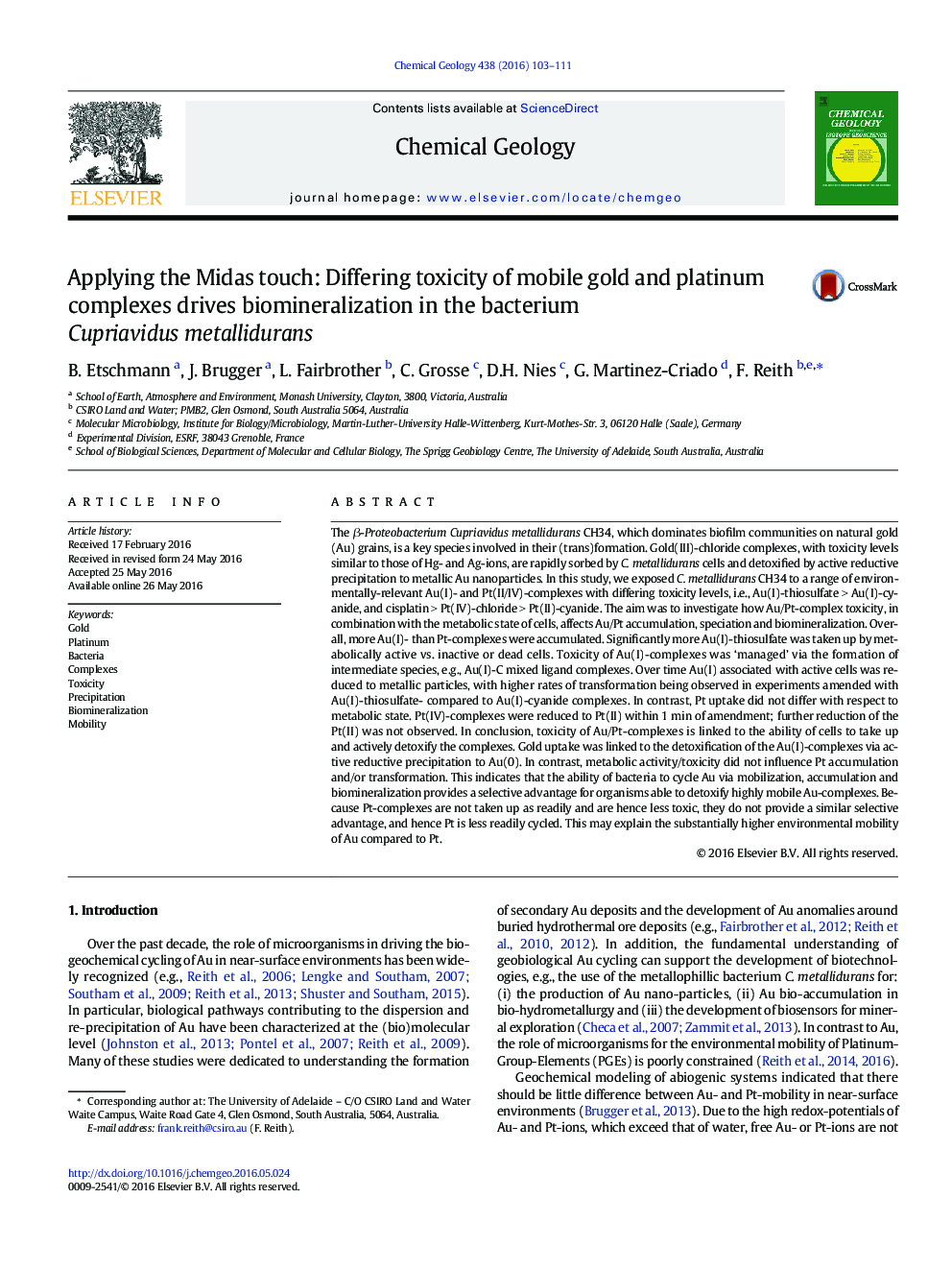| کد مقاله | کد نشریه | سال انتشار | مقاله انگلیسی | نسخه تمام متن |
|---|---|---|---|---|
| 6436066 | 1637536 | 2016 | 9 صفحه PDF | دانلود رایگان |

- Aqueous Au/Pt-complex stability, biotoxicity, biomineralization and environmental mobility are linked.
- Toxicity of Au- vs. Pt-complexes a key factor for nano-particle biomineralization.
- Metabolic state of cells a key factor for Au nano-particle biomineralization.
- Different biogenic Au/Pt turnover results in different environmental mobility.
The β-Proteobacterium Cupriavidus metallidurans CH34, which dominates biofilm communities on natural gold (Au) grains, is a key species involved in their (trans)formation. Gold(III)-chloride complexes, with toxicity levels similar to those of Hg- and Ag-ions, are rapidly sorbed by C. metallidurans cells and detoxified by active reductive precipitation to metallic Au nanoparticles. In this study, we exposed C. metallidurans CH34 to a range of environmentally-relevant Au(I)- and Pt(II/IV)-complexes with differing toxicity levels, i.e., Au(I)-thiosulfate > Au(I)-cyanide, and cisplatin > Pt(IV)-chloride > Pt(II)-cyanide. The aim was to investigate how Au/Pt-complex toxicity, in combination with the metabolic state of cells, affects Au/Pt accumulation, speciation and biomineralization. Overall, more Au(I)- than Pt-complexes were accumulated. Significantly more Au(I)-thiosulfate was taken up by metabolically active vs. inactive or dead cells. Toxicity of Au(I)-complexes was 'managed' via the formation of intermediate species, e.g., Au(I)-C mixed ligand complexes. Over time Au(I) associated with active cells was reduced to metallic particles, with higher rates of transformation being observed in experiments amended with Au(I)-thiosulfate- compared to Au(I)-cyanide complexes. In contrast, Pt uptake did not differ with respect to metabolic state. Pt(IV)-complexes were reduced to Pt(II) within 1 min of amendment; further reduction of the Pt(II) was not observed. In conclusion, toxicity of Au/Pt-complexes is linked to the ability of cells to take up and actively detoxify the complexes. Gold uptake was linked to the detoxification of the Au(I)-complexes via active reductive precipitation to Au(0). In contrast, metabolic activity/toxicity did not influence Pt accumulation and/or transformation. This indicates that the ability of bacteria to cycle Au via mobilization, accumulation and biomineralization provides a selective advantage for organisms able to detoxify highly mobile Au-complexes. Because Pt-complexes are not taken up as readily and are hence less toxic, they do not provide a similar selective advantage, and hence Pt is less readily cycled. This may explain the substantially higher environmental mobility of Au compared to Pt.
Journal: Chemical Geology - Volume 438, 2 November 2016, Pages 103-111